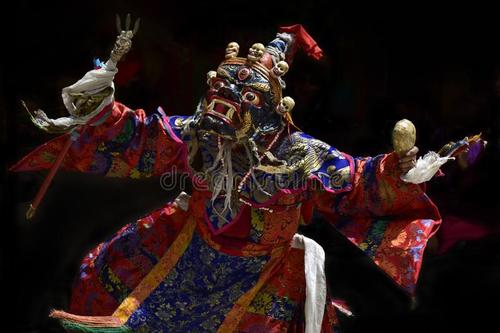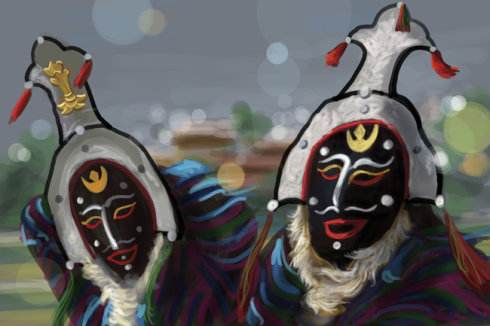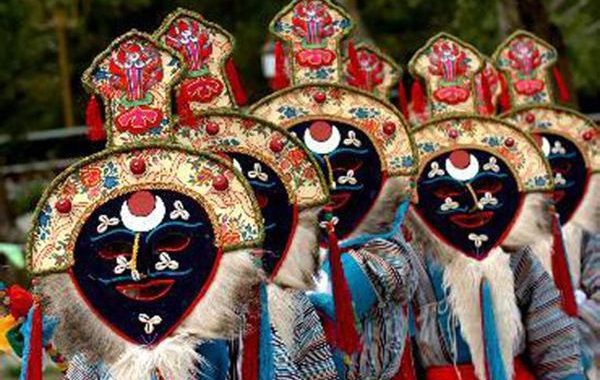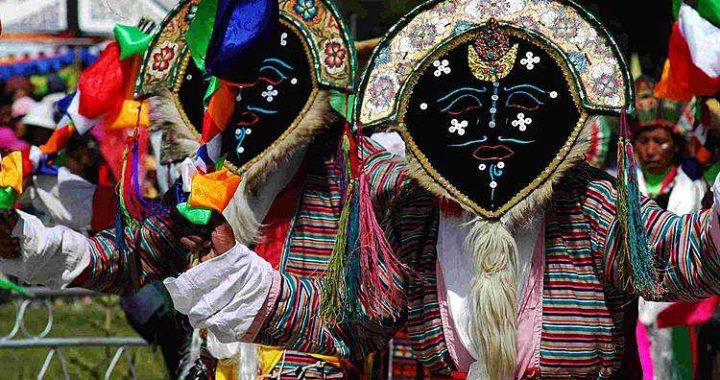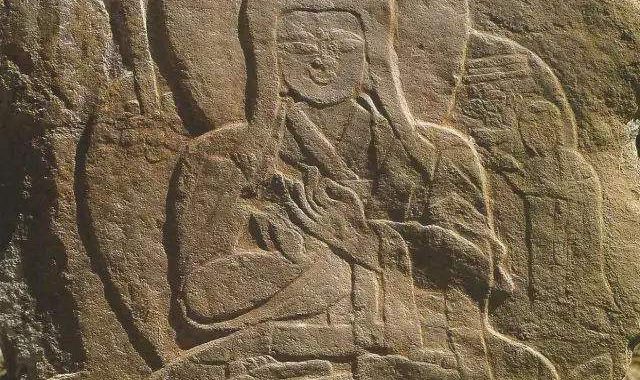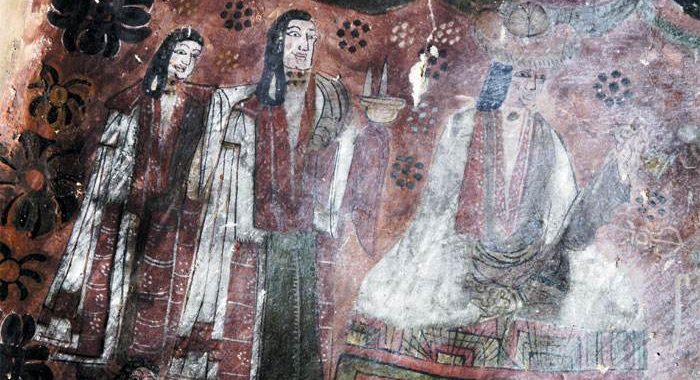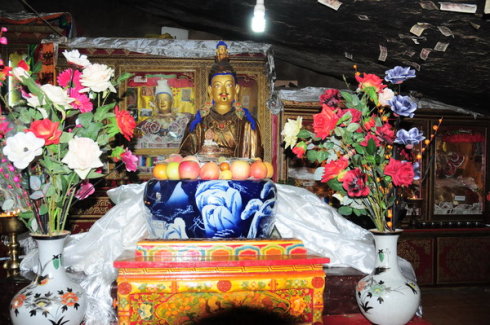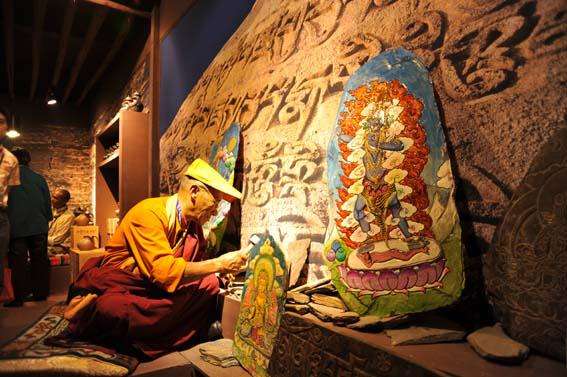Bull boat singing and dancing
2 min readTibetans living along the Yarlung Zangbo River lived on fishing for generations.They made bull boats with cowhide by making use of animal husbandry.When returning from fishing,the fishermen would beat the bull boat with a paddle and dance along the way.Gradually the bull boat singing and dancing performance was established.As this form of art evolved from wild yak singing and dancing,it retains parts of the lyricssuch as the source and the taming process of the yak.It consists of four parts:singing and swaying of the head,the shoulders,the soft waist and flexible feet.The dancer vigorously swings the boat on his head and walks with firm steps,while beating the gunwale as an accompaniment,presenting recreational and artistic value.

The performance of bull boat singing and dancing
Jiang Gzhas:wolf hunting singing and dancing In ancient times,Tibetans attached very high value to livestock to adapt to the unique natural environment of the plateau,but they had tofend off attacks from wild animals,of which the wolf posed the biggest danger.Anyone who killed a wolf would be highly praised and rewarded.
Thus a tradition gradually evolved:to reward the one who killed a wolf,people would deliver their best wishes to the warrior with loud singing and unrestrained dancing.The warrior would carry the wolfskin and lead the people in performing the programs he had composed at various pastures and villages while receiving gifts from them.Gradually a set of songs and dances took shape,named Jiang Gzhas,meaning”wolf hunting,singing and dancing”and there are 20 programs of this form of art.
The performance of Jiang Gzhas
The performance of Chakhen Tagshur-ritual acrobatic form by singing and dancing.
